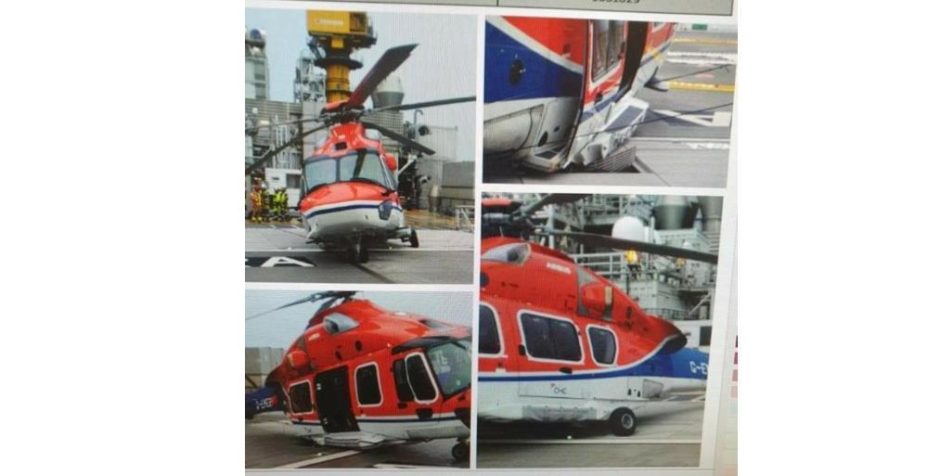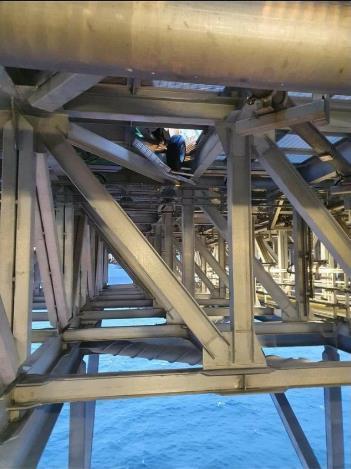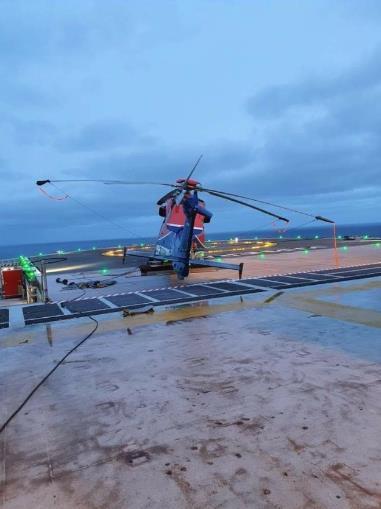
Crew change flights to Equinor’s Mariner A platform have been suspended after an aircraft got stuck on the installation’s helideck, the Norwegian oil firm said today.
An H175 helicopter, which had suffered a technical fault, was being moved to make way for other flights when a section of deck grating was damaged, Equinor said.
Photos shared with Energy Voice appear to show that the rear right wheel had gone through the grating, trapping the aircraft.
A spokeswoman for Equinor said the helicopter’s engines and rotor were switched off at the time and that no one was injured during the ground-handling incident, which occurred on March 30.
She said teams from Equinor and helicopter operator CHC were working to resolve the issue in order to resume normal helicopter operations.
A total of 207 crew are currently on board and all relevant authorities have been informed, she said.
Equinor would not say how or when the situation was likely to be resolved, but confirmed the incident was “ongoing”.
Jake Molloy, regional organiser of the RMT trade union, said it was the first time he’d heard of an incident like this occurring on a UK North Sea platform.
Mr Molloy said the main section of the helideck used for landing aircraft would have been “sound enough”.
But he said the situation would be a “sickener” for crew who were unable to return to shore as a result.
In February, Equinor said it had completed a virtual inspection of the helideck, describing the feat as a first for the company and the UK Continental Shelf.
The company said the idea was driven by Covid-19 restrictions and involved the use of a “HoloLens mixed reality” headset.
The visible detail provided by HoloLens, supported by technical documentation, led to the Helideck Certification Agency issuing a full two-year recertification for the Mariner A helideck.
Equinor achieved first oil from the 300 million barrel Mariner field, located 95 miles east of Shetland, in 2019 following the investment of £6.4 billion.
The heavy oilfield was first discovered in 1981 but it took decades for the industry to work out how to make it viable.
The complexity of the project required new technology and new seismic data to find the right solution.
CHC and the Health and Safety Executive have been contacted for comment.

 © Supplied by Anon
© Supplied by Anon © Supplied by Anon
© Supplied by Anon